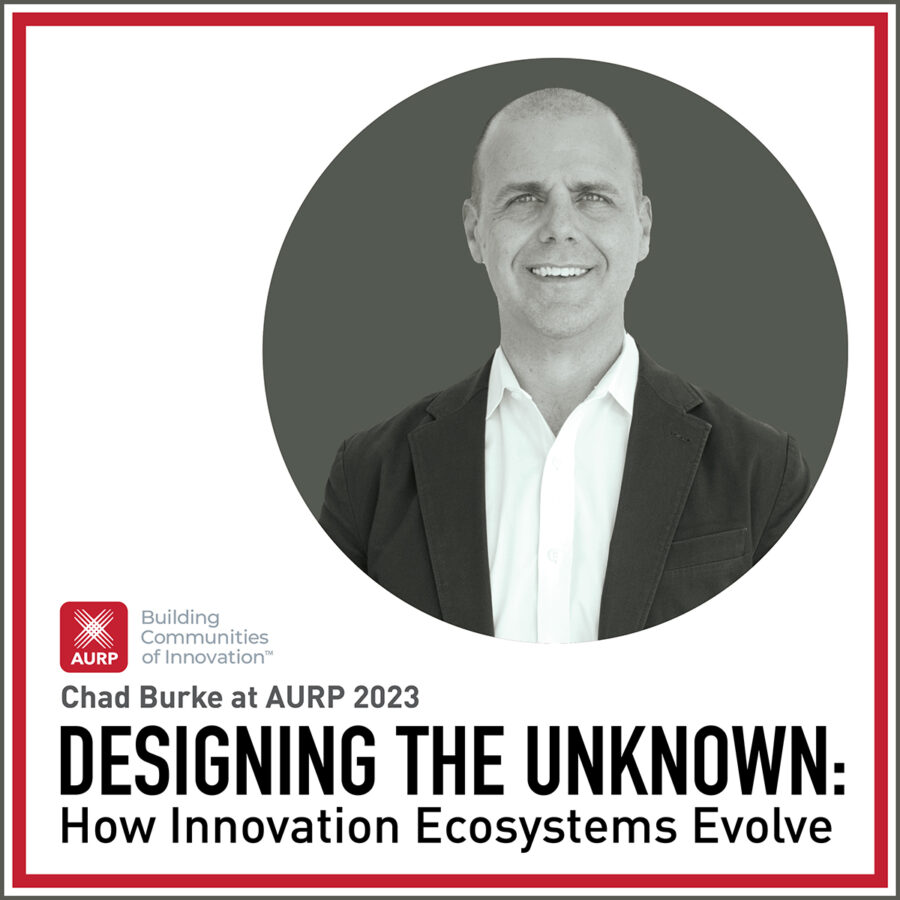Insights
Dec 1, 2023 _ insights
Designing the Unknown: How Innovation Ecosystems Evolve (a Case Study)
University of Cincinnati’s (UC) first interdisciplinary research facility, Digital Futures, is where researchers, entrepreneurs, non-profits, and businesses collaborate on moon-shot thinking to address real-world problems. At the intersection of technology, innovation, and collaboration, the project’s challenge is accommodating diverse modes of research while anticipating yet-to-be-imagined programming, partnerships, and possibilities.
UC’s Associate Vice President for Research, Strategic Programs & Signature Initiatives, Jennifer Krivickas and I recently described this challenge—and how we tackled it—at the Annual Conference of the Association of University Research Parks (AURP).
If you look through our slide deck, you can get background on the project: why it’s important to UC and Cincinnati; how its program came together; and how the design for phase two of the project was adapted after we conducted a Post Occupancy Evaluation of the initial phase.
I also wanted to share a few takeaways:
- Big vision requires big thinking.
Transformative projects, like Digital Futures, require its planners to think beyond their usual set of concerns. Looking beyond square footages or the functional needs of the space, it’s important to think about how off-campus spaces can contribute to institutional goals and the physical, economic, and social well-being of the neighborhood in which it is located. - Working off campus has new challenges.
Part of the value of moving a project like this off campus is that it helps breakdown institutional barriers associated with campus spaces. But it also brings challenges. In many respects, universities need to learn how to communicate with development and corporate partners, who may be driven by different values, expectations, and cultures. It’s also essential for the university to think about how to brand the space, so though it is not on campus, it is still identifiable as a university space. - Innovation happens at multiple scales.
In some ways, this echoes the first point. But we encourage clients who are working in Innovation Districts to think about their designs at four scales (the district, the institutional, the site, and the space). In our design process, we use these scales as lenses to bring different opportunities into focus. Briefly put, we encourage clients to consider the broad, regional partnerships that will enable you to distinguish your Innovation District from others across the country; how the space can advance the strategic goals of your university; how it can participate in a neighborhood that researchers will want to work in; and how the building itself can foster collaboration, communication, and moments of inspiration.
It’s an exciting time for research at the University of Cincinnati, and the strategic thinking and design of Digital Futures is playing an important role in generating that buzz.

Chad Burke, AIA, LEED AP is the Mixed-Use market director at GBBN. Overseeing the firm’s Commercial, Multi-Family Residential, Non-Profit and Workplace projects, Chad works closely with developers and workplace clients to design solutions that meet their short-term and long-term needs. His work includes University of Cincinnati’s Digital Futures, Digital Futures 2, Hillrom’s Innovation Center, and Thompson Hine’s Office Renovation. Learn more about his approach to workplace projects here.




